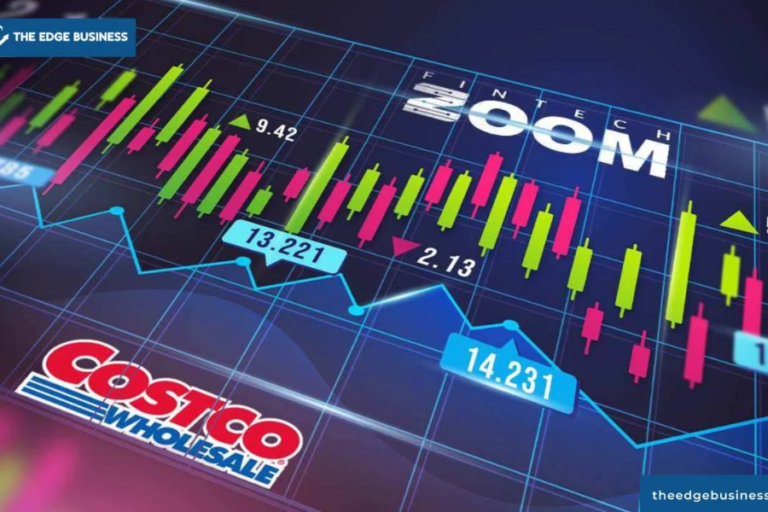Rai Vans: The Future Of Sustainable Transport And Logistics Innovation
In today’s dynamic media landscape, the demand for adaptable and effective production solutions is at an all-time high. Enter the RAI Van—a game-changing mobile unit that forms part of an innovative trio of vehicles designed to meet the evolving needs of broadcasters, event organizers, and content creators. What sets the RAI Van apart is its state-of-the-art satellite technology and advanced network transmission capabilities. These features not only ensure high-quality production standards but also enhance efficiency across various media platforms.
Equipped with cutting-edge equipment, the RAI Van empowers broadcasters to deliver seamless live broadcasts from virtually any location. Event organizers benefit from its versatility, enabling them to capture and stream events in real-time with uncompromised quality. For content creators, the van offers a flexible solution for producing engaging multimedia content on the go. Whether it’s covering breaking news, sporting events, or cultural celebrations, the RAI Van sets a new benchmark for reliability and innovation in mobile production units.
In essence, the RAI Van represents a pivotal advancement in media technology, facilitating smoother workflows and elevating the standard of production capabilities in today’s fast-paced media industry.
What Is A Rai Van?

A Rai Van is a unique hybrid vehicle that integrates the efficiency of rail transport with the flexibility of road transport. This innovative vehicle is engineered to operate on both railway tracks and regular roads, allowing it to smoothly transition between these environments. By combining the strengths of rail and road transport, Rai Vans offers a versatile solution to modern logistics needs.
The dual capability of Rai Vans enables them to navigate through urban areas and reach remote locations, leveraging the efficiency of rail networks for long-distance travel while maintaining the flexibility to access destinations directly by road. This flexibility not only enhances logistics efficiency but also reduces transportation costs and environmental impact by optimizing route choices based on specific cargo requirements.
In essence, Rai Vans represents a cutting-edge approach to transportation that maximizes versatility, efficiency, and sustainability in today’s interconnected world.
Types Of Rai Vans

| Type | Description |
|---|---|
| Passenger Rai Vans | Designed for comfortable and efficient transportation of people, equipped with amenities like seating, restrooms, Wi-Fi, and entertainment systems. High-speed options are available for rapid long-distance travel. |
| Cargo Rai Vans | Specialized for transporting goods, available in configurations such as box vans, flatbeds, and refrigerated vans. Essential for logistics, enabling the movement of various types of cargo across regions and countries. |
| Specialized Rai Vans | Tailored to specific needs and applications, including medical Rai Vans with healthcare facilities, luxury Rai Vans for high-end travel, and maintenance Rai Vans for railway infrastructure upkeep. Customized to meet specific operational requirements. |
Rai Vans encompass a variety of types tailored to different transportation and logistical needs. Passenger Rai Vans prioritize comfort and efficiency for travelers, equipped with amenities ranging from seating arrangements to high-speed capabilities for rapid long-distance transit. Cargo Rai Vans are essential for the logistics industry, offering versatility with configurations like box vans, flatbeds, and refrigerated vans to transport goods across varying terrains and distances.
Specialized Rai Vans cater to specific applications, such as medical Rai Vans equipped with healthcare facilities, luxury Rai Vans providing upscale travel experiences, and maintenance Rai Vans crucial for the upkeep of railway infrastructure. Each type of Rai Van optimizes transportation efficiency and meets specific operational demands, ensuring its vital role in modern transportation and logistics sectors.
Design And Features Of Rai Vans

Here are the revised subheadings for the design and features of Rai Vans:
1. Structural Engineering
Rai Vans are meticulously designed with robust materials and engineering principles to withstand the challenges of rail transport, prioritizing stability, durability, and noise reduction.
2. Advanced Features
Modern Rai Vans incorporate cutting-edge technologies and amenities such as enhanced suspension systems, climate control, ergonomic seating, and innovative safety measures to optimize performance and enhance passenger comfort.
3. Safety and Compliance
Safety is a top priority in Rai Van design, incorporating reinforced structures, collision avoidance systems, automated braking, and adherence to rigorous safety standards to ensure the utmost protection for passengers and cargo alike.
Benefits Of Rai Vans

| Advantage | Description |
|---|---|
| Increased Efficiency | Smooth transitions between rail and road, minimizing handling processes and optimizing delivery times. |
| Reduced Congestion | Alleviates road congestion by using rail networks for long-haul transport, enhancing delivery reliability. |
| Cost-Effectiveness | Reduces transportation costs through optimized fuel consumption and route planning flexibility. |
| Infrastructure Savings | Decreases strain on rail and road infrastructure, leading to potential savings in maintenance and development. |
| Environmental Benefits | Significantly lowers greenhouse gas emissions with electric propulsion systems and use of rail networks. |
| Sustainability | Contributes to sustainable logistics practices and reduces overall carbon footprint in transportation operations. |
Rai Vans offer several advantages that make them a compelling option in logistics and transportation. Their ability to seamlessly transition between rail and road modes enhances efficiency by minimizing handling processes and optimizing delivery schedules. This not only reduces delays but also ensures more reliable transport timelines. By utilizing rail networks for long-haul journeys, Rai Vans helps alleviate road congestion, contributing to faster and smoother delivery operations.
This dual-mode capability also supports cost-effectiveness, as it allows for the selection of the most economical routes and reduces fuel consumption. Moreover, Rai Vans promotes environmental sustainability by significantly lowering emissions through the use of electric propulsion systems and the efficient utilization of rail infrastructure. This aligns with global efforts to foster greener supply chains and combat climate change, making Rai Vans a sustainable and efficient choice for modern logistics solutions.
Rai Vans Financial And Infrastructure Challenges

High Initial Costs: Investing in Rai Vans and the necessary infrastructure can be substantial. Logistics companies must conduct thorough cost-benefit analyses to evaluate the long-term savings and operational efficiencies against the initial expenditures. This includes the cost of the vehicles themselves as well as the infrastructure needed to support their operation.
Infrastructure Development: Building the infrastructure to support Rai Vans, such as rail tracks, terminals, and charging stations, requires significant investment and coordination. Government support and public-private partnerships can play a crucial role in facilitating this development, ensuring that the necessary facilities are in place to support the efficient operation of Rai Vans.
Regulatory And Policy Considerations
Regulatory Compliance: Ensuring compliance with existing regulations is essential for the successful deployment of Rai Vans. This involves navigating a complex landscape of rail and road transport regulations, which include safety standards, environmental requirements, and operational guidelines. Logistics companies must stay informed and adapt to these regulations to maintain compliance.
Policy Support: Government policies and incentives are significant factors in the adoption of Rai Vans. Supportive policies, such as subsidies, tax incentives, and grants, can encourage logistics companies to invest in hybrid transportation solutions. Policymakers play a vital role in creating an environment that supports the integration of these innovative vehicles into the transportation network.
Technological And Operational Integration Of Rai Vans
Compatibility: Integrating Rai Vans into existing logistics networks requires ensuring compatibility with current systems and technologies. This includes seamless integration with both rail and road infrastructure, as well as with logistics management systems. Effective technological integration is essential for maximizing the efficiency and benefits of Rai Vans.
Interoperability: Achieving interoperability between different logistics operators, rail companies, and technology providers is crucial for the success of Rai Vans. Standardizing technologies and protocols can facilitate smooth operations and enhance collaboration across the logistics ecosystem. This interoperability ensures that Rai Vans effectively integrates within diverse logistical frameworks, promoting widespread adoption and efficiency.
Economic Impact of Rai Vans

1. Enhancing Local Economies
Rai Vans play a pivotal role in bolstering local economies by enhancing trade, commerce, and tourism. The efficiency of rail transport helps businesses streamline their supply chains, reduce costs, and improve delivery times, thereby driving economic growth. Additionally, the development of railway infrastructure associated with Rai Vans stimulates regional development, attracting investment and promoting economic activities in surrounding areas.
2. Employment Generation
The railway industry, particularly the production and operation of Rai Vans, is a substantial source of employment. This sector generates jobs across various fields, including manufacturing, maintenance, logistics, and administration. As the industry grows, it continues to create new job opportunities for both skilled and unskilled workers, contributing to workforce development and economic stability.
3. Shaping Market Dynamics
The market for Rai Vans is shaped by several factors, including technological advancements, regulatory changes, and economic conditions. Key trends driving the industry include the shift towards electric and autonomous Rai Vans, a strong emphasis on sustainability, and the growing demand for efficient transportation solutions. These trends are influencing the development of innovative features and capabilities, positioning Rai Vans as a crucial component of the future transportation landscape.
Real-World Applications: Successful Implementations Of Rai Vans
1. European Innovations: Leading the Way in Hybrid Transport
Several European countries have successfully integrated Rai Vans into their logistics networks. In Germany, for example, Rai Vans have been implemented to optimize freight transport across the country’s extensive rail and road infrastructure. These vehicles have significantly reduced transit times and transportation costs, contributing to environmental sustainability. The integration of Rai Vans has also improved the flexibility and reliability of the logistics network, allowing for more efficient handling of goods.
2. North American Advancements: Boosting Efficiency in Logistics
In North America, logistics companies are increasingly adopting Rai Vans to boost operational efficiency and reduce carbon emissions. Major companies like FedEx and UPS have incorporated Rai Vans into their fleets, capitalizing on their dual-mode capabilities to enhance last-mile delivery and streamline long-haul transport. By utilizing Rai Vans, these companies have been able to optimize route planning, reduce fuel consumption, and lower operational costs, all while minimizing their environmental impact.
Future Trends for Rai Vans

1. Innovations on the Horizon
The future of Rai Vans is being shaped by significant trends such as digitalization, automation, and sustainability. Advances in artificial intelligence (AI), the Internet of Things (IoT), and renewable energy are driving innovation in the industry. These technological advancements are expected to result in the development of more efficient, safer, and environmentally friendly Rai Vans. Enhanced connectivity and smart systems will allow for better route planning, maintenance, and overall operational efficiency, contributing to a more streamlined logistics process.
2. Overcoming Obstacles
While the railway industry faces several challenges, including infrastructure constraints, regulatory hurdles, and technological complexities, these obstacles also present numerous opportunities for innovation and growth. Infrastructure limitations require strategic investments in new facilities and upgrades to existing ones. Collaborating with policymakers can navigate regulatory hurdles, creating supportive frameworks. Addressing technological complexities involves fostering partnerships with tech companies and investing in research and development. By tackling these challenges head-on, the industry can unlock the full potential of Rai Vans, making them a cornerstone of modern transportation systems.
3. Envisioning the Future
The vision for the future of Rai Vans is to create a sustainable, efficient, and interconnected transportation system. This vision encompasses the integration of cutting-edge technologies, a strong emphasis on environmental sustainability, and a focus on enhancing the experiences of both passengers and cargo. By embracing these principles, Rai Vans can contribute significantly to reducing carbon footprints and improving logistical efficiency. The continued evolution of Rai Vans will play a vital role in shaping the future of global transportation, making it more resilient, adaptable, and environmentally conscious.
Conclusion
Rai Vans represents a transformative solution in modern transportation, blending the efficiency of rail transport with the flexibility of roadways. These hybrid vehicles seamlessly switch between rail tracks and roads, optimizing logistics by reducing handling processes and minimizing delays. They alleviate road congestion by leveraging rail networks for long-distance travel, enhancing delivery reliability and cost-efficiency. Built with robust materials like steel and aluminum, Rai Vans ensures stability and durability while minimizing vibrations and noise. Advanced features such as regenerative braking and real-time tracking systems further enhance operational efficiency and safety standards, making them a sustainable alternative to traditional diesel trucks.
Successful implementations in Europe and North America highlight Rai Vans’ impact on economic growth and environmental sustainability. Countries like Germany have streamlined freight transport, reducing transit times and lowering operational costs. In North America, logistics giants like FedEx and UPS utilize Rai Vans to improve delivery precision and reduce carbon emissions. Despite challenges such as initial investment costs and regulatory complexities, the future outlook for Rai Vans remains promising.
Advancements in digitalization, automation, and renewable energy will drive further innovations, enhancing connectivity and operational efficiency across global logistics networks. Rai Vans are positioned to play a pivotal role in shaping a more resilient and environmentally conscious transportation system, fostering worldwide economic development and job creation.
People Also Ask (FAQs)
1. What is a Rai Van?
A Rai Van is a hybrid vehicle designed to operate on both rail tracks and conventional roads. It combines the efficiency of rail transport with the flexibility of road transport, allowing seamless transitions between the two modes.
2. How are Rai Vans designed?
Rai Vans are structurally designed with materials like steel and aluminum for durability and stability. They feature advanced technologies such as regenerative braking, real-time tracking systems, and ergonomic enhancements for comfort and safety.
3. Where have Rai Vans been successfully implemented?
Rai Vans have been successfully integrated into logistics networks in Europe and North America. Countries like Germany use Rai Vans to optimize freight transport, while logistics companies in North America, such as FedEx and UPS, adopt them for efficient last-mile delivery and reduced environmental impact.
4. What are the challenges associated with Rai Vans?
Challenges include initial investment costs for both vehicles and infrastructure, regulatory compliance complexities, and the need for technological integration into existing logistics systems. Overcoming these challenges requires strategic investments and supportive government policies.
5. What is the future outlook for Rai Vans?
The future of Rai Vans is promising with advancements in digitalization, automation, and sustainable energy sources driving innovation. They are expected to play a crucial role in creating a more efficient, interconnected, and environmentally friendly global transportation system.
Stay tuned for more updates and alerts visit: England Tribune!





